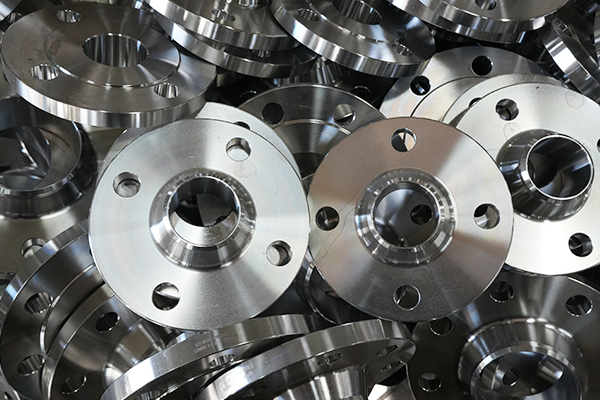NewsDetails
Application of Seamless Steel Pipes in Special Environments: Selection Strategies for High-Temperature and Low-Temperature Resistant Materials
author:Zhantong time:2025-06-14 11:03:10 Click:138
In fields such as petrochemicals, energy and power, and aerospace, extreme high-temperature and low-temperature working conditions impose stringent requirements on the performance of seamless steel pipes. The correct selection of high-temperature and low-temperature resistant seamless steel pipes not only concerns the safety of engineering systems but also directly affects their service life and operational costs. This article will delve into the material characteristics and selection strategies of seamless steel pipes in special environments, providing professional references for engineering practices.
I. Application and Material Selection of High-Temperature Resistant Seamless Steel Pipes
(A) Common Application Scenarios
High-temperature resistant seamless steel pipes are widely used in high-temperature and high-pressure industrial environments, such as reactors and cracking units in petroleum refining, high-temperature steam transmission pipelines in thermal and nuclear power generation, and high-temperature medium transmission systems in industrial furnaces and heat treatment equipment. In these scenarios, the steel pipes need to withstand the combined challenges of high temperature, high pressure, and corrosive media over the long term.
(B) Material Characteristics and Classification
Alloy Steels: Chromium-molybdenum alloy steels excel in medium to high-temperature conditions due to their superior high-temperature strength and oxidation resistance, effectively resisting high-temperature creep and oxidative corrosion.
Stainless Steels: Austenitic stainless steels (such as 310S and 321) possess good high-temperature corrosion resistance and can operate stably in high-temperature environments containing corrosive media such as sulfides and chlorides.
Nickel-Based Alloys: Nickel-based alloys like Inconel and Hastelloy exhibit exceptional resistance to extreme high temperatures and can withstand ultra-high temperatures and strong corrosion, commonly used in high-precision and cutting-edge fields such as aerospace.
(C) Core Selection Criteria
High-Temperature Strength and Creep Performance: Ensure that the steel pipes do not deform or fracture during long-term use at high temperatures.
Oxidation and Carburization Resistance: Prevent material degradation caused by high-temperature oxidation and medium infiltration.
Microstructural Stability: Ensure that the steel pipes maintain structural stability in high-temperature environments and avoid performance degradation.
II. Application and Material Selection of Low-Temperature Resistant Seamless Steel Pipes
(A) Typical Application Scenarios
Low-temperature resistant seamless steel pipes are mainly used in the storage and transportation of liquefied natural gas (LNG), cryogenic chemical plants, air separation equipment, as well as in polar engineering, low-temperature laboratories, and other low-temperature environments. These scenarios require the steel pipes to maintain good toughness and crack resistance at extremely low temperatures.
(B) Material Characteristics and Classification
Low-Temperature Carbon Steels: Specially treated low-temperature carbon steels (such as 09MnNiDR) significantly enhance low-temperature toughness and can maintain material flexibility at lower temperatures.
Low-Temperature Alloy Steels: Low-temperature alloy steels such as 3.5% nickel steel and 9% nickel steel exhibit excellent performance in cryogenic environments and can effectively prevent low-temperature embrittlement.
Austenitic Stainless Steels: Austenitic stainless steels like 304L and 316L not only possess good low-temperature performance but also have non-magnetic and corrosion-resistant properties, suitable for low-temperature scenarios with stringent environmental requirements.
(C) Key Considerations
Low-Temperature Impact Toughness and Brittleness Transition Temperature: Ensure that the steel pipes do not undergo brittle fracture at low temperatures and maintain structural integrity.
Fatigue and Crack Propagation Resistance: Prevent fatigue cracks and their propagation caused by stress concentration in low-temperature environments.
Chemical Stability: Avoid corrosion and performance impacts on the steel pipes caused by chemical media in low-temperature environments.
III. Comprehensive Strategies for Material Selection in Special Environments
(A) Analysis of Environmental Parameters and Working Conditions
Accurate Definition of Temperature and Pressure: Clearly define the temperature range and pressure level of the engineering environment to provide a basis for material selection.
Assessment of Medium Characteristics: Analyze the corrosiveness, flowability, and other characteristics of the conveyed medium to select corrosion-resistant and erosion-resistant materials accordingly.
Consideration of Additional Environmental Factors: Comprehensively consider the potential impacts of environmental humidity, radiation, and other factors on the performance of the steel pipes.
(B) Balancing Performance and Cost
Comparison of Applicability and Economy of High-Performance Alloys: Weigh the differences in performance and cost of different materials to select the most cost-effective solution.
Exploration of Alternative Material Feasibility: Evaluate the application potential of new materials such as composites in special environments.
Assessment of Full Life Cycle Costs: Comprehensively consider the procurement, maintenance, and replacement costs of the steel pipes to achieve long-term economic benefits.
IV. Conclusion
The material selection of seamless steel pipes in special environments is a systematic project that requires comprehensive consideration of environmental conditions, material performance, cost-effectiveness, and industry standards. High-temperature and low-temperature resistant materials each have their own characteristics, and only by scientifically selecting materials based on specific working conditions can the stable and reliable operation of seamless steel pipes in extreme environments be ensured, providing solid support for various engineering projects. With the continuous advancement of material technology, more high-performance materials will be applied in special environments in the future, driving the continuous development of the seamless steel pipe field.
 Recommended Products
Recommended Products
 Contact us
Contact us
—— Contact:Manager
—— Tel:+86 15231788966
—— Email:info@zhantongpipe.com
—— Url:https://www.zhantongpipe.com
—— Address:Mengcun Hui Autonomous County, Cangzhou City, Hebei Province









